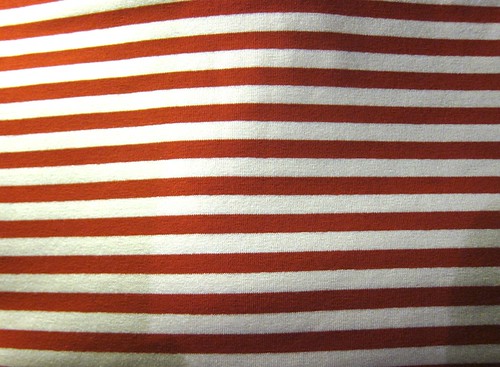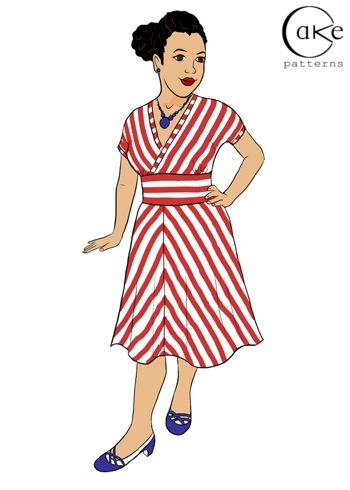Although I try to keep this blog strongly focused on knitting and sewing, I've been struggling with a few things recently that I wanted to share, from least to most challenging.
#1: Life Without a Cat.
Above is a recent photo of my sweet cat Ronnie (on right), snuggled up with with his best friend Squeaky. But that's not my chair, and that's not my apartment.
A few weeks ago we were devastated to learn in Z's latest round of allergy tests that she had become SEVERELY allergic to cats (after previously testing negative)... which likely explained her constant runny nose and the horrible flare-ups she'd been having in her eczema, which her dermatologist told us were probably related to newly developed environmental allergies, not her existing severe food allergies.
As painful as it was, we had no choice—we sent Ronnie to live with my parents, washed EVERYTHING in the apartment, scrubbed and vacuumed and scrubbed again... the allergist says it will take SIX years to remove all the cat dander completely because it's so sticky, but we have hopefully reduced the allergen load by a big amount.
The good news is, little Z's eczema has improved significantly. She still scratches constantly (waking herself up at night), and still has some patches on her face, arms and legs, and we still have to give her Zyrtec every day and COVER her in layers of ointments and cream twice a day... but for the first time in MONTHS, her face is no longer covered with oozing open sores and a bumpy red rash—probably because she was so fond of hugging Ronnie and rubbing her face against him.
Still, living without a cat is such a bummer. We had already lost one cat when my sweet (but very sickly) little Riley died last year, and it's just WEIRD coming home to an apartment without a cat to greet me and wind around my legs, or sit on the floor next to the sewing table or... you get the idea. (Also: I'll never qualify for the Sewing With Cats Blog Award! Even though I've had to replace my presser foot cable TWICE due to feline destruction!)
Little Z really misses him, so she's been playing a lot with a stuffed kitty doll that she has named "Ronnie." But I have to say he probably doesn't miss her—she was always a little too generous with her affection! And both Ronnie and Squeaky are happier not to be solo cats anymore.
#2: Sending My Food-Allergic Toddler Off to Preschool
So #1 sucks. But #2... is beyond terrifying. Z has life-threatening allergies to sesame, mustard, eggs, tree nuts and cow's milk. Even a small amount of these foods—as we learned the first time she had a tiny bite of hummus and we had to call an ambulance to rush her to the ER—could be extremely dangerous for her. And because sesame and mustard aren't "Top 8" allergens in the U.S. (though they are in Canada and Australia), U.S. food labels aren't required to mention them, and can even include them in vague terms like "spices" or "natural flavorings."
So there aren't ANY restaurants we can safely take her to these days (she's just way too grabby and mobile), and all the constant label-reading and cooking EVERYTHING special and from scratch and calling companies to make sure they don't process sesame or mustard in the same factory as her bread or cereal is a bit exhausting. We bake her special allergen-free cupcakes if she gets invited to a birthday party, and we ALWAYS carry safe snacks for her everywhere.
Since she was born, Z has always been taken care of by family—at first by me, and then when I went back to work, by my mom, and for the past year-and-a-half, by my husband. We've never even hired a babysitter for her, since we don't feel safe trusting an outsider to manage her severe food allergies. The few date nights we get, she's been watched by family members or by generous friends who came to our sesame and nut-free apartment.
Out on the playground, we probably look like so-called "helicopter parents", because we have to constantly be hovering to make sure she doesn't put anything dangerous in her mouth (like a dropped nut, say) or go too near to a child eating hummus or a sesame snack or goldfish crackers.
But as much as I would like to keep her in a magic allergy-free bubble, little Z is old enough that she needs to be around more kids. So we've enrolled her fulltime in a wonderful little preschool near our apartment where she'll get to play, learn, grow and make new friends.
We're meeting with everyone at the school to work out a plan for keeping her safe whenever kids are eating or snacking, for having safe foods available for her for snacktimes—and of course for having an Epi-pen available and everyone trained to use it in case of a reaction.
They are super responsive and understanding, and have managed severe allergies before (though maybe not as many in one child as Z has?!), but I will admit the whole thing is giving me nightmares.
Z, on the other hand, is totally psyched. She had her first two "assimilation" (is it just me, or does that remind you of the Borg?) classes this week and keeps talking about how much she loves school and her teacher.
#3: Etcetera.
So yeah. Add in the complete lack of sleep or free time I've had in the evenings since Z learned to climb out of her crib and we tried to put her in a "big girl" bed... and the tighter-than-tight budget regime we've instituted to make preschool possible (we've completely eliminated takeout or buying lunches out, groceries for each meal must cost less than $2.50/person, no buying books or DVDs or sewing supplies or music, thrift-store clothes only, etc.)...
... and I'm a bit frazzled, to say the least. I'm trying to stay positive, though—I have a wonderful daughter, a loving husband, an amazing family and a cool job and I live in a fabulous city! The school is being great about Z's food allergies and my kitty is in a happy new home.
And there are upsides, of course! For example, our strict budget has led to us trying lots of tasty new recipes—and Z has been loving coming with me to the farmer's market every Saturday to pick out her favorite fruits and veggies. She even helps me cook—last night she mixed up the guacamolé herself and helped me make pizza dough for tonight's dinner, and the other day she tore the kale leaves from the stems to make kale soup.
Thanks for listening! Phew!












